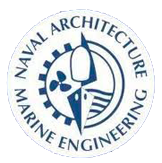Environmental and Social Sustainability
Figure 1. Sustainability [1]
One of the primary objectives of this project is to be sustainable from an environmental, social and economic point of view.
Social Equity
Regarding the social aspects of the project, it aims to promote fishery, shipping maintenance and local jobs. Public participation and community involvement are more important than ever.
Potential communities to be affected:
Social impact management measures
How can the public become engaged and enfranchised by this project? After researching several EIA approved methods, the best options were found to be workshops and public hearings [2].
The most favourable scenario, which would signify a considerable economic benefit, assumes that construction, installation, operation, maintenance and decommissioning take place in Scotland. The second possible scenario considers that only operation and maintenance are done in Scotland, and hence, the economic benefit would be less, compared to the first scenario [3].
Environmental Stewardship
From an environmental point of view, the project presents multiple advantages. First and foremost, considering both the platform and the wind turbines are floating, this allows for a reduction in the drilling activities that take place in fixed offshore wind energy projects, and which causes large impacts on the seabed and the ecosystem.
The fact that the project comprises a platform on which many activities are combined helps to minimise the environmental impact significantly. By aiming for a more centralized system and doing maintenance on site apart from other synergies, the environmental impact can be reduced and the economic and social aspect of the project can be enforced [4]. As a result of having the different components of the project concentrated, this helps a lot in minimizing the environmental impact.
It is clear the fact that we need renewable energy to have a higher impact in the energy mix of every country in order to start developing a global sustainable energy supply. Renewable marine energy, as a result of its unique characteristics and advantages, is aimed to play a fundamental role in the future and help our generation tackle climate change and provide clean, reliable and sustainable energy.
Wind and waves, as renewable sources of energy, strongly help reduce carbon emissions, which in turn will contribute towards many species’ welfare. CO2 emissions that can be avoided are calculated using 420 grammes of CO2 / kWh produced [5] as a reference for non-renewable energy sources, such as coal, gas and oil plants (the embedded CO2 in the construction/installation is not considered) and 115 grammes of CO2 as the tons accounting for the platform manufacturing bearing in mind that the material the platform is made of is concrete [6]. Table 1 demonstrates the potential occuring CO2 emissions savings by utilising our concept.
| Table 1: CO2 Savings | |||||
|---|---|---|---|---|---|
| Combined MWh/year | Tons CO2 avoided/year | Tons CO2 avoided project | Tons CO2 platform | TONS CO2 EMISSIONS savings | |
| Low Case | 171,942 | 72,216 | 1,444,311 | 31301 | 1,413,011 |
| High Case | 460,782 | 193,529 | 3,870,570 | 31301 | 3,839,269 |
Regarding the mitigation measures, there are several measures that can be suggested to be applied in order to avoid or mitigate the environmental impact, following the proper mitigation hierarchy (Figure 2).
Figure 2. Mitigation hierarchy [7]
Avoidance is the most important part in order to mitigate negative environmental impacts. Site selection, as well as installation and aviation, defined routes to avoid collisions or other impacts. It is also important the timing when it comes to the construction phase. Regarding fish and shellfish ecology, maps indicate the site chosen for development was done to avoid impacting a larger portion of the community. One possibility to improve the mitigation measures to be deployed concerning the commercial fisheries would be to apply wider safety areas and a longer period. Enhancement that can be done at this point is to build a website to keep fishermen detailed informed in advance regarding the installation process. Further enhancement could be achieved by creating a vertical ocean farm for crustaceans, seaweed and other harvestable marine foods (link).
The following surveys are needed to be conducted to analyse potential environmental impacts:
Economic Prosperity
In order to engage developers and stakeholders in this fight for a greener world, there are plenty of favourable regulations coming from the government, encouraging the development of projects like this, which will eventually lead the industry to become economically sustainable. An in-depth financial and sensitivity analysis has been conducted in the present project.
Go to Wind & Wave Synergy
References
[1] http://cctfiles.cct.org/apply/funding-priorities/sustainability
[2] André, P., B. Enserink, D. Connor and P. Croal Public Participation International Best Practice Principles. Special Publication Series No. 4. Fargo, USA: International Association for Impact Assessment, 2006.
[3] Hywind Scotland Pilot Park Environmental Statement, 1st ed. Statoil Wind Limited (SWL), 2016.
[4] Offshore Wind, VOL VII no. 01 2016.
[5] Ofgem. [Online]. 2016. Ofgem.gov.uk. Available from: https://www.ofgem.gov.uk [Accessed: 5 May 2016].
[6] Sheet C1 - Embodied CO2 of Concrete and Reinforced Concrete. 1st edition. 2008
[7] "Biodiversity - Sustainable development 2013 - Rio Tinto", Riotinto.com, 2016. [Online]. Available: http://www.riotinto.com/sustainabledevelopment2013/environment/biodiversity.html. [Accessed: 08- Apr- 2016]

